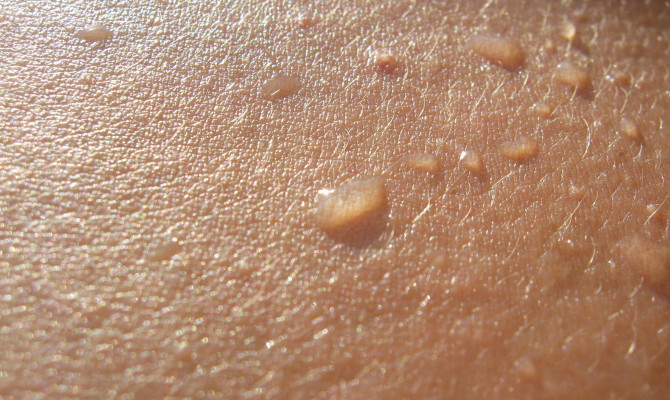Blood Cell Disorders : Types and Management

- Blood Cell Disorders
- 14 Aug 2023
Overview
What is Blood cell disorder ?
Blood cell disorder is a term used to define any condition affecting any one or more components of the blood. White blood cells, platelets, red blood cells, and plasma are all blood components.
Each of these elements has specific functions to carry out, and blood disorders are conditions that prevent any one or all of them from doing so. White blood cells fight infections, platelets aid in blood clotting, red blood cells deliver oxygen throughout the body, and plasma cells aid in regulating body temperature and take waste from cells and transport it to the kidneys and liver, where it is excreted. Genes are to blame for many blood disorders. 1What is blood cell disorders? | Researched based study from nih.gov A person may have been born with a non-cancerous blood disease or develop one as a result of an underlying blood-related illness.

Classification
Types of blood disorders
According to the blood component that is affected, there are four different types of blood disorders:
Red blood cell disorders:
Diseases that either impact the number of red blood cell production or function. Among the most common red blood cell abnormalities are:
Anemia
A condition where the body lacks sufficient numbers of healthy red blood cells and may include the following types:
- Iron deficiency anemia – when the body is lacking in mineral iron.
- Pernicious anemia – an autoimmune disorder wherein the system fails to absorb enough vitamin B-12, leading to a decrease in the number of RBCs.
- Aplastic anemia – a dangerous yet uncommon illness where the bone marrow stops producing sufficient red blood cells. It can happen at any age.
- Autoimmune hemolytic anemia – the body’s immune system rapidly attacks its red blood cells compared to how it normally replaces them.
- Sickle cell anemia – Red blood cells have undergone genetic mutations to take on the sickle shape and are less able to transport oxygen to their surrounding tissues.
Thalassemia
- The ability of the body to manufacture RBCs and hemoglobin is impacted by a genetic condition.
Polycythemia vera
- It is a blood cancer that grows slowly and is characterized by excess RBCs in the body.
- It raises the risk of life-threatening medical conditions such as strokes and heart attacks.
White blood cell disorders:
Occur when the white blood cell level is either excessively low or extremely high, or they are malfunctioning.
Leukopenia
- A drop in white blood cell count, because of the destruction of existing cells or a lack of new cell production.
Leukocytosis
- A rise in white blood cell count, because of various cancerous or non-cancerous disorders. 2Types of blood cell disorders | Researched based study from aafp.org
Disorders involving specific types of white blood cells may include:
- Neutropenia – Certain drugs, cancer, and other bone marrow infections can cause a drop in the neutrophil count.
- Lymphocytopenia – a genetic condition, sickness, medicine, or other therapy side effects that can result in a decline in the number of lymphocytes.
- Lymphocytosis – an unusually high number of lymphocytes are seen.
- Increased monocyte – less frequently seen. Monocyte counts can rise as a result of infections, cancer, autoimmune disorders, and other illnesses.
- Decreased monocyte count – caused by chemotherapy, toxins, and other factors.
- Eosinophilia – a condition in which there are more eosinophil cells than usual and can result from several allergies and parasite infections, etc.
- Basopenia – allergies or infections may cause the basophil count to decline.
- Basophilia – a few types of blood cancer and other illnesses can cause an increase in the number.
Leukocytosis is accompanied by several white blood cell diseases, such as:
- Chronic idiopathic neutrophilia – neutrophil counts are high continuously and unjustifiably.
- Lymphoma – a variety of cancer where the white blood cells change and uncontrollably multiply. Example: Hodgkin’s and non-Hodgkin’s lymphoma.
- Lymphocytic leukemia – a slowly progressing type of blood cancer. Bone marrow gets filled with abnormal white blood cells.
- Myeloproliferative disorders – include six other forms of slowly spreading cancer that disrupt the bone marrow’s ability to produce mature white blood cells, leading to an overabundance of immature white blood cells.
Platelet disorders:
Occur when there are either too few or too many platelets in the blood or the existing platelets are malfunctioning and are mainly passed down through families. A few examples of common platelet disorders may include:
Von Willebrand disease
- The most widespread inherited bleeding condition in which there is a lack of von Willebrand factor, a protein that facilitates blood clotting (VWF).
Hemophilia
- A well-known blood clotting condition that mainly affects males. Excessive and extended bleeding may be seen.
Primary thrombocythemia
- A rare condition where too many platelets are produced in the bone marrow producing clots that move and cause heart attack or stroke.
Acquired platelet function disorder
- Some common medicines like aspirin, some antibiotics, anti-histamines, NSAIDs (Non-steroidal anti-inflammatory drugs), anti-depressants, etc. if used over an extended period, may impact the ability of platelets to function normally.
Plasma cell disorder:
Occurs when one plasma cell multiplies too rapidly. A type of white blood cell called B-cells, 3Types of blood cell disorders | Researched based study from sciencedirect.com give rise to plasma cells. The most common types include:
Monoclonal Gammopathy
- An accumulation of monoclonal antibodies made by abnormal but non-cancerous plasma cells.
Multiple myeloma
- A type of plasma cell cancer in which the bone marrow and, other regions of the body are affected by the uncontrolled proliferation of abnormal plasma cells.
Symptoms
Symptoms:
The following are some general symptoms:
- A sense of being ill
- Exhaustion without cause
- An unexplained decrease in weight
The following symptoms may arise based on the severity and kind of blood cell involved:
Red blood cell abnormalities can cause the following symptoms:
- Paleness
- Breathing problems
- Lightheadedness
- A pounding chest
- Exhaustion
- Trouble focusing
- Muscle ache
- Jaundice or skin yellowing
White blood cell abnormalities present with the following symptoms:
- Fever
- Chills
- Exhaustion
- Muscle pain
- Mouth ulcers
- Throat ache
- Bruising easily
- Sweaty nights
- Swelling and redness
- Breathing issues
- Recurring infections
- Red or white mouth patches
- Wounds that heal slowly
Platelet and clotting dysfunction symptoms include:
- Problem with blood clotting.
- Uncontrollable bleeding
- Skin that is easily bruised
- Recurrent wounds or wounds that heal slowly
- Unexpected bleeding in the gut, gums, nose
- Profuse bleeding following small cuts
- Internal bleeding can result in joint pain.
- Excessive bleeding in females during the period
- Prolonged bleeding following childbirth or a miscarriage
- Excessive bleeding after surgery, even dental procedures
- The presence of blood in one’s urine or stools
Plasma cell abnormalities can present with symptoms like:
- Bone ache
- Diarrhea
- Bone fractures
- Abdominal pain
- Difficult to swallow
- An unexpected fever
- Feeling drained
- Breathing issues
- A larger tongue
Prevention
Prevention
Suggestions to reduce the risk of developing blood disorders may include the following:
- Eat a nutritious, vitamin- and mineral-rich, balanced diet.
- Regular exercise will improve immunity.
- Keep a healthy weight.
- Take action to avoid getting an infection of any kind.
- Practice good hygiene.
- Schedule regular checkups.
Diagnosis
Diagnosis
Diagnosis may include questions about the symptoms, past medical and family history, and the following tests:
Red blood cell assessments could include the following:
- Hemoglobin test – used frequently to identify anemia.
- Hematocrit test – determines the percentage of red blood cells present in the blood.
- Mean corpuscular volume (MCV) – is an estimation of a red blood cell’s usual size.
- Reticulocyte count – to assess if the bone marrow is producing adequate healthy red blood cells.
White blood cell tests may comprise a complete blood count (CBC) with differential to analyze each type of white blood cell:
- Eosinophil count – which could indicate excessive eosinophil levels (eosinophilia). Eosinophilia may indicate undiagnosed medical issues.
- Basophil count – When the body overproduces basophils, basophilia results. Some blood cancers may be indicated by a high basophil count.
- Neutrophils – Neutropenia refers to low neutrophil numbers. The chance of developing a serious infection may increase if a person has neutropenia.
- Monocytes – Monocytosis, or the presence of an abundance of monocytes, could indicate an infectious condition.
- Lymphocytes – Lymphocytes can be divided into two categories: T lymphocytes (T cells) & B lymphocytes (B cells) produce antibodies; they target and eliminate invading pathogens and other invaders.
The following tests may be used to assess platelets:
- Peripheral blood smear (PBS) – done under a microscope to observe the platelets.
- Platelet count – determines how many platelets are present in the blood.
- Mean platelet volume (MPV) test – determines the platelet’s average size.
Tests to evaluate plasma cells:
- Serum immunoglobulin test may be done.
- Presence of a paraprotein or M protein in the serum. 4Diagnosis | Researched based study from nih.gov
- Plasma protein test – detect the amount of protein in the blood
The following tests may be performed:
- A complete blood count
- Electrolytes like calcium
- Creatinine levels
- Lactate dehydrogenase
- B-2 Microglobulin.
Other tests may include:
- Urine test – may detect the presence of red blood cells in hemolytic anemia, blood in platelet disorder, or Bence Jones proteins 5Diagnosis | Researched based study from nih.gov or M protein in plasma cell disorder, etc.
- Stool test – checks the presence of blood in the stool sample.
- Colonoscopy – done to look for bleeding in the intestines.
- Endoscopy – to look for any abnormal bleeding or growth in the food pipe, stomach, and the upper part of the small intestine.
- Chest x-ray – recommended to rule out any other infections.
- Magnetic Resonance Imaging (MRI) scan – is highly helpful in patients who have received numerous blood transfusions and to discover issues with the bone and bone marrow as well as to assess the iron levels in the heart, liver, and other organs.
- CT of the Abdomen and pelvis – This can be used to identify swollen lymph nodes or a spleen, and also aids in cancer detection.
- Bone marrow aspiration and biopsy – determine the bone marrow’s general health and its capacity to generate the appropriate number of blood cells.
- Multiparametric flow cytometry – is an effective method for assessing plasma cell dysfunction.
Management

Management of Blood cell disorder
The course of treatment is determined by the underlying cause, the patient’s age, and their general state of health. The doctor may combine several therapies and treatments could consist of the:
- Medical supplements – Additional supplements like iron and vitamins B-9 or B-12 help alleviate anemia brought on by dietary deficits. Both vitamin B-9 and vitamin B-12 have alternate names, including folate and cobalamin.
- Antibiotics – Individuals with white blood disorders may be prescribed antibiotics to help them fight infections.
- Watchful waiting – this technique involves keeping a close eye out for any new indications that a blood issue is developing.
- Blood transfusions – may be used to help replace damaged or lost blood cells and to increase red blood cell numbers in persons with severe forms of anemia.
- Platelet transfusions – may be used to treat problems with blood clotting.
- Anticoagulants – prevent excessive blood clotting by aiding in the treatment of blood clotting disorders.
- Growth factor supplementation – enhances the bone marrow’s capacity to produce more red and white blood cells. Examples include erythropoietin-stimulating drugs (ESA).
- Corticosteroids – suppress the immune system. Used to treat autoimmune hemolytic anemia.
- Bone marrow transplant surgery – may replace harmed marrow or restore it and assists bone marrow in starting to produce normal blood cells. It may be necessary to transfer stem cells, typically from a donor.
- Cancer therapy – If cancer is the actual reason for the blood disorder, treatments such as radiation therapy, chemotherapy, targeted therapy, and immunotherapy may be used.
Outlook
Outlook
The best approach to ensure a person with a blood disorder lives a healthy and fulfilling life is to get them diagnosed and managed as soon as possible. Because blood cell abnormalities can take many different forms, each person’s experience with any of these conditions will be very different. Radiation therapy or chemotherapy are frequently used as treatments, though they can differ based on the condition’s type and severity. These illnesses are frequently long-term and necessitate ongoing medical attention. Most persons with non-cancerous blood diseases live regular lives and enjoy a decent quality of life with the help of treatment.
Any feedback on this article?
 This Articles content was accurate
This Articles content was accurate Very Informative Article
Very Informative Article I have a question or a comment
I have a question or a comment
 This article contains inaccurate content
This article contains inaccurate content This article was not helpful
This article was not helpful I have a question or a comment
I have a question or a comment
We appreciate your helpful feedback!
Checkout our social pages
References
-
National Institutes of Health
Blood Diseases/What is blood cell disorder?
-
American Academy of Family Physicians
Evaluation of Patients with Leukocytosis/Types
-
Science Direct
Plasma cell differentiation and multiple myeloma/Types
-
National Institutes of Health
Diagnosis of Plasma Cell Dyscrasias and Monitoring of Minimal Residual Disease by Multiparametric Flow Cytometry
-
National Institutes of Health
Plasma Cell Neoplasms (Including Multiple Myeloma) Treatment/Diagnosis



































